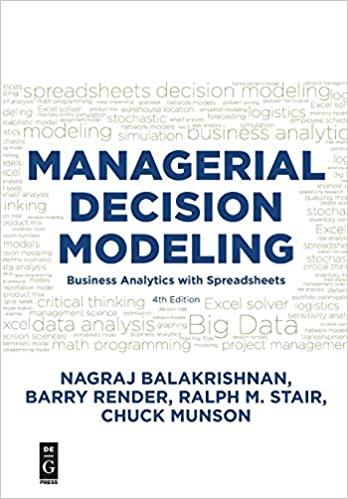Question
PRIAMARY DATA ;Humans have never stopped evolving andcontinue to do so today. Evolution is a slow process that takes many generations of reproduction to become
PRIAMARY DATA;Humans have never stopped evolving andcontinue to do so today. Evolution is a slow process that takes many generations of reproduction to become evident. Because humans take so long to reproduce, it takes hundreds to thousands of years for changes in humans to become evident. We simply don't notice the evolution of humans from day to day because it is happening so slowly. But creatures that reproduce more quickly also evolve more quickly. For instance, bacteria can reproduce within 20 minutes, so their evolution can be watched by scientists over the course of a few days. All creatures are always evolving. There is no way to stop evolution.
CASE STUDY;Some people think that humans' development of technology has enabled us to short-circuit evolution, or step outside of evolution. But evolution is not some magical transformation that happens in the wild to dim-witted creatures, propelling them ever towards greater complexity. Evolution is just the observation that creatures change over time because varieties that do best at surviving and reproducing in a given environment are more able to pass their genetic traits on to the next generation. Technology is part of evolution, as is poetry and economics, in so far as they affect survival and reproduction, and can be passed on genetically. Those races that use technology in order to better survive and reproduce are able to pass along their technology-minded genes to the next generation. Technology is not evidence that the evolutionary process has been destroyed or side-stepped. Rather, technology is direct evidence that evolution is still at work. Technology is so effective at helping the human species to survive and reproduce that humans have come to dominate the globe in the process, and technology has proliferated.
QUESTSIONS
Question 8
In the treatment of reflux oesophagitis with a proton pump inhibitor (PPI), should the PPI be life long or given for 4-8 weeks, as mentioned by the drug manufacturers?
Question 9
Would a patient who suffers with reflux oesophagitis as a result of a hiatus hernia, and who is not responsive to proton pump inhibitors (PPIs), benefit from a highly selective vagotomy?
Question 10
What are the causes of belching and what appropriate drug can be used? 2. What are the effects of smoking on the gastrointestinal tract and what is its role in peptic ulcer disease?
Question 11
Dear authors, why are gastric ulcers more common along the lesser curve, near the pylorus of the stomach?
Question 12
What is the best time of day to administer omeprazole, and why?
Question 13
Is it safe to use the drugs omeprazole and ranitidine during pregnancy?
Question 14
Are non-steroidal anti-inflammatory drugs harmful to the stomach when taken parenterally, for example by intravenous or intramuscular routes?
Question 15
Is it safe to give a patient with a past history of bleeding peptic ulcer aspirin in an antiplatelet dose of 75-325 mg?
Question 16
Is sulpiride effective in the treatment of a peptic ulcer or gastrooesophageal reflux disease (GORD)?
Question 17
Is clopidogrel gentle on the stomach? Question 18 Is there a drug interaction between non-steroidal anti-inflammatory drugs (NSAIDs) and proton pump inhibitors (PPIs)
Step by Step Solution
There are 3 Steps involved in it
Step: 1

Get Instant Access to Expert-Tailored Solutions
See step-by-step solutions with expert insights and AI powered tools for academic success
Step: 2

Step: 3

Ace Your Homework with AI
Get the answers you need in no time with our AI-driven, step-by-step assistance
Get Started


